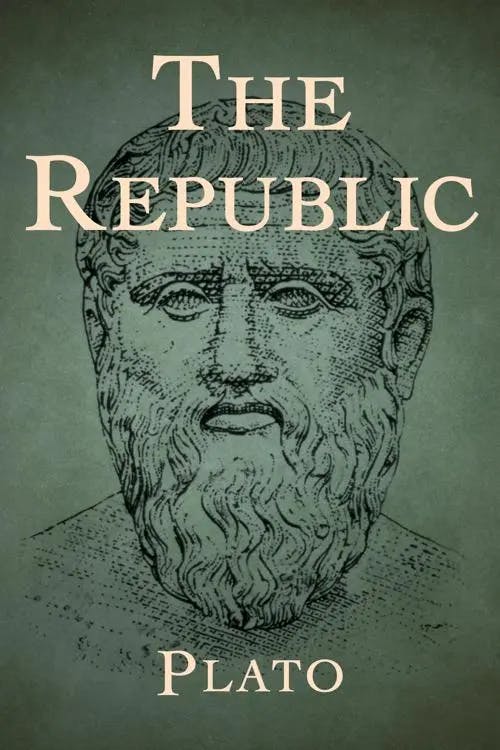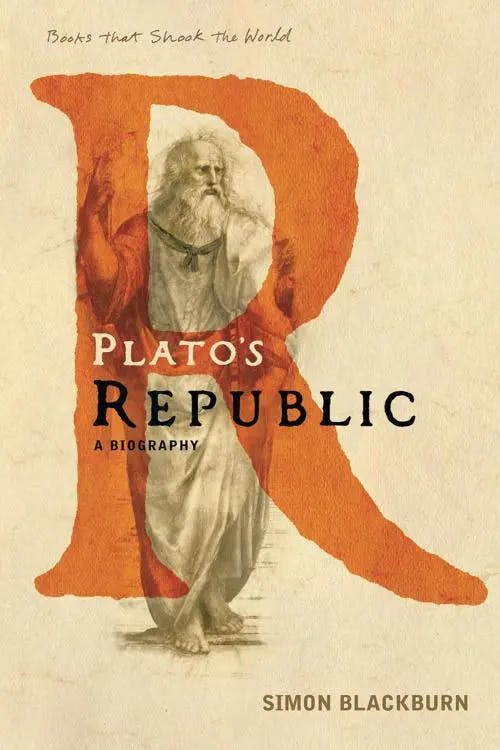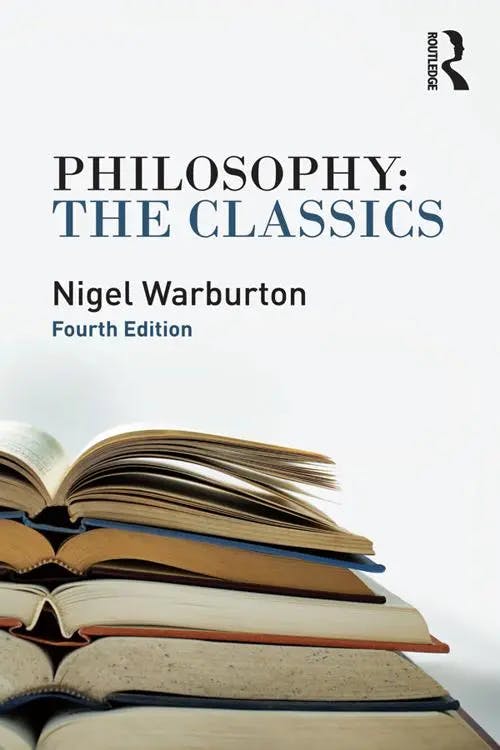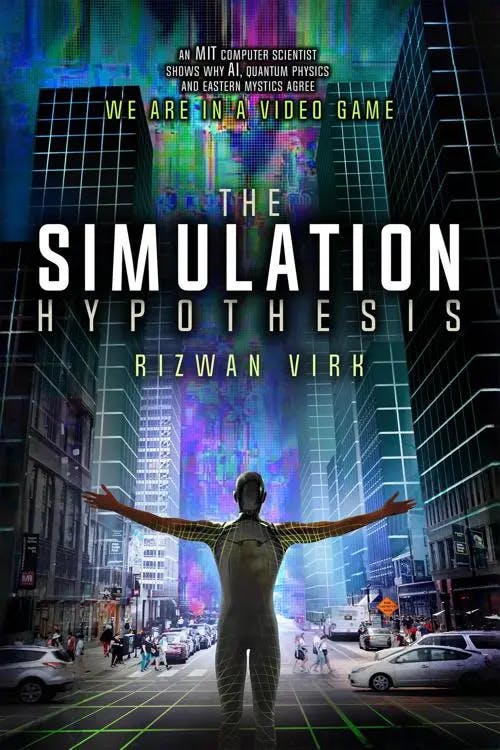What is Plato's Allegory of the Cave?
MA, English Literature (University College London)
Date Published: 06.03.2023,
Last Updated: 26.10.2023
Share this article
Summarising Plato's Allegory of the Cave
The ancient Greek philosopher Plato is one of the most influential figures in Western philosophy. His theories have played a pivotal role in the formulation of major world religions, such as Christianity.
It is fitting, then, that this most famous of philosophers is credited with arguably ‘the most famous metaphor in the history of philosophy’ (Blackburn, 2012): the Allegory of the Cave. Appearing in The Republic (c. 380–360 BCE [2014]), Plato’s seminal work, the allegory symbolises humanity’s unenlightened state and the means by which, through reason and philosophy, we are able to move from belief to knowledge. Plato asks us to imagine a journey of enlightenment, through which we are able to comprehend the true Forms of reality beyond the empirical realm of the senses.
About this book
Plato’s most famous work and the bedrock of Western philosophy Written in the form of a Socratic dialogue, The Republic is an investigation into the nature of an ideal society. In this far-reaching and profoundly influential treatise, Plato explores the concept of justice, the connection between politics and psychology, the difference between words and what they represent, and the roles of art and education, among many other topics. A towering achievement of philosophical insight, The Republic is as relevant to readers today as it was to the citizens of ancient Athens.
Pages in book 392
Format ePUB (mobile friendly)
Year 380–360 BCE (2014)
Breaking down the Allegory of the Cave
‘[L]et me show in a figure how far our nature is enlightened or unenlightened’. (c. 380–360 BCE [2014])
Presented in the form of a dialogue between Socrates (Plato’s teacher) and Glaucon (Plato’s brother), the Allegory of the Cave can be found in Book VII of The Republic. It is constructed as follows:
- Firstly, we are asked to imagine prisoners who have been in a cave since ‘their childhood’, with ‘their legs and necks chained so that they cannot move’. They are only able to see the cave wall in front of them, as they are ‘prevented by the chains from turning round their heads’. For them, the cave is their whole world.
- Then, we are told that a fire blazes above and behind the prisoners, with a wall between them and the fire. Men are walking on the other side of this wall, holding up (above the wall, like a puppeteer) ‘all sorts of vessels, and statues and figures of animals’.
- The shadows cast by these objects appear on the cave wall in front of the prisoners. As the prisoners can only see the shadows, Plato asserts that they will then think of these shadows as objects in reality – as the object itself, rather than its mere shadow.
For the prisoners, then, the only reality they can see consists of the shadows of artificial objects, as well as their own shadows (the prisoners cannot see each other). The only ‘sun’ they are aware of is nothing more than a small fire. Their reality is a poor simulation of the true reality beyond the cave. As Plato summarises,
‘To them [...] the truth would be literally nothing but the shadows of the images.’ (c. 380–360 BCE [2014])
With the stage now set, Plato progresses the allegory – what would happen if a prisoner were to be released? How would this affect their grasp of reality? Plato presents a stratified process; the released prisoner reaches enlightenment by degrees, mimicking the intellectual journey Plato envisages for philosophers:
- At first, the journey would be painful and disorienting. Dazzled by the closer light of the fire, the prisoner would be ‘perplexed’ by his full view of the cave. With no terms of reference to make sense of what he is seeing, ‘he will be unable to see the realities of which in his former state he had seen the shadows’. At this stage, the prisoner would ‘fancy that the shadows which he formerly saw are truer than the objects which are now shown to him’.
- After this, if the prisoner were to be dragged out of the cave into the full glare of the sun, he would be ‘pained and irritated’. Again, he would be dazzled and (initially, at least) unable to see anything of the world outside.
- By degrees, the prisoner would ‘grow accustomed to the sight of the upper world’. He would progress from seeing shadows, to the ‘reflections of men and other objects in the water, and then the objects themselves’.
- Finally, ‘he will be able to see the sun, and not mere reflections of him in the water’. He would see the sun as ‘the guardian of all that is in the visible world, and in a certain way the cause of all things’ (with the sun here closely resembling Plato’s conception of a transcendental Form of the Good).
At this point in the allegory, the prisoner has completed their journey of enlightenment, and come to see the truth of reality. But the allegory does not stop there: feeling pity for the other prisoners, the released prisoner/philosopher now resolves to selflessly descend once more into the cave. As he has grown accustomed to the light of the outside world, however, he becomes disoriented once again upon re-entry. He can no longer see the world inside the cave as well as the other prisoners – leading them to dismiss and even threaten him:
Men would say of him that up he went and down he came without his eyes; and that it was better not even to think of ascending; and if any one tried to loose another and lead him up to the light, let them only catch the offender, and they would put him to death. (c. 380–360 BCE [2014])
Plato
Men would say of him that up he went and down he came without his eyes; and that it was better not even to think of ascending; and if any one tried to loose another and lead him up to the light, let them only catch the offender, and they would put him to death. (c. 380–360 BCE [2014])
What does the Allegory of the Cave mean?
There are many possible interpretations that can be made when assessing the meaning of Plato’s Allegory of the Cave. As Simon Blackburn observes in Plato’s Republic: A Biography (A Book that Shook the World) (2012),
Like other myths it weaves its own spell, and is sufficiently capacious to include almost any journey of increased understanding, whatever local form it may take.
Simon Blackburn
Like other myths it weaves its own spell, and is sufficiently capacious to include almost any journey of increased understanding, whatever local form it may take.
On a fundamental level, Plato is quite clear that the allegory symbolises an intellectual journey from ignorance to knowledge; from artifice to reality; and from lies to truth. The cave represents our empirical reality, the fire represents our sun, and the outer world represents the greater, abstract realm of Forms (or Ideas) we are able to access through philosophy. The sun symbolises the ultimate Form of the Good, which presides over everything. As Plato (through the character of Socrates) explains,
[T]he prison-house is the world of sight, the light of the fire is the sun, and you will not misapprehend me if you interpret the journey upwards to be the ascent of the soul into the intellectual world. (c. 380–360 BCE [2014])
The released prisoner can be seen to represent a philosopher who (very much in Plato’s self-identified mould) has intellectually ascended from the world of mere appearances and apprehended the abstract world of Forms – the real world of truth, philosophy, and goodness. The other prisoners represent the bulk of unenlightened humanity; still ignorant of the truth, and clinging to the shadows they believe to be real.
In Plato’s ideal republic, it is the role of these enlightened philosopher-kings to return to the cave and guide others with the benefit of their superior knowledge. Plato believes these philosophers are best placed to rule society, as they have knowledge of the Form of the Good – from which all truth and goodness flow,
‘[I]n the world of knowledge the idea of good appears last of all, and is seen only with an effort; and, when seen, is also inferred to be the universal author of all things beautiful and right, parent of light and of the lord of light in this visible world, and the immediate source of reason and truth in the intellectual’. (c. 380–360 BCE [2014])
In short, then, the meaning of the Allegory of the Cave can be summarised as the journey philosophers can take from ignorance to enlightenment. Through the upwards ‘ascent of the soul into the intellectual world’, they have gained true knowledge – and it is this supposed true knowledge which underpins Plato’s argument that it is philosophers who should rule society.
Criticism of Plato’s Cave
Just as with Plato’s interlinked theory of the Forms, a fundamental criticism of his Allegory of the Cave is that it relies upon the unproven reality of a higher metaphysical plane.
As Nigel Warburton points out in Philosophy: The Classics (2014),
Perhaps hardest to stomach is the notion that the Forms actually exist and are the reality of which the observed world is simply a shadowy copy. If we jettison the theory of Forms, then the metaphysical underpinning of many of Plato’s proposals would be removed. For instance, without the notion that philosophers are particularly good at gaining knowledge of reality, there would be no obvious justification for putting them in charge of the ideal state.
Nigel Warburton
Perhaps hardest to stomach is the notion that the Forms actually exist and are the reality of which the observed world is simply a shadowy copy. If we jettison the theory of Forms, then the metaphysical underpinning of many of Plato’s proposals would be removed. For instance, without the notion that philosophers are particularly good at gaining knowledge of reality, there would be no obvious justification for putting them in charge of the ideal state.
Without this metaphysical underpinning, Plato’s Allegory of the Cave arguably becomes a less ambitious model; still usefully symbolising a movement from ignorance to knowledge, but now tied to the empirical world and robbed of its revelatory, metaphysical currency. Without a higher plane of reality to apprehend, or any mystical knowledge of truth and goodness granted by a transcendental Form of the Good, Plato’s argument for philosopher-kings begins to look unstable. There is no proof that our reality is an inferior copy, or shadow, of another reality, nor is there proof that philosophers have unique access to true knowledge. There is, in short, no proof for the world of Forms the allegory relies upon for its full power.
Perhaps by definition, however, there cannot be any empirical proof for that which lies beyond any empirical means of measurement. Defenders of Plato might also argue that proof of the transcendental is not necessary for the Allegory of the Cave to have value. As M. B McCoy notes in Image and Argument in Plato’s Republic (2020):
[T]he cave image functions to allow us to imagine a way of existing beyond the current state of our own knowledge. One may not yet know the forms after listening to the cave image but can understand the concept of a world that exceeds what one takes to be fundamental to one’s own reality.’
Marina Berzins McCoy
[T]he cave image functions to allow us to imagine a way of existing beyond the current state of our own knowledge. One may not yet know the forms after listening to the cave image but can understand the concept of a world that exceeds what one takes to be fundamental to one’s own reality.’
In this sense, the Allegory of the Cave may be taken as an allegory of sublime experience: an engaging image that makes us valuably aware of the limits of human awareness, and of the confusing experience that may ensue when our brains rub up against those limits.
The legacy and influence of Plato’s Cave
Together with his theory of Forms, Plato’s Allegory of the Cave has been influential in subsequent transcendental thought. Major religions such as Christianity are similarly concerned with a greater spiritual or abstract realm beyond the immediate grasp of our senses. As Platonism grew in popularity, it ‘thereby became the background philosophical underpinning of the theologies of the monotheistic religions’ (Blackburn, 2012).
In particular, Plato’s Form of the Good (symbolised by the sun in the Allegory of the Cave) has many clear parallels with monotheistic conceptualisations of God. Both are seen as the cause of all things, and the source of all truth and goodness.
As well as influencing philosophy and religion, the Allegory of the Cave has become a cultural touchpoint. Its influence can be found in a range of art and media – most famously in The Matrix (1999). Here, Neo takes a similar journey of philosophical discovery; escaping his computer-simulated reality to access the higher level of truth beyond.
The simulation hypothesis as a whole, notably popularised by Nick Bostrom, is effectively a modern reconfiguration of Plato’s Allegory of the Cave. As Rizwan Virk summarises in his book The Simulation Hypothesis (2019),
The idea that what we call reality is actually a super-sophisticated video game is popularly referred to as the Simulation Hypothesis. The fundamental question raised by the simulation hypothesis is this: Are we all actually characters living inside some kind of giant, massively multiplayer online video game, a simulated reality that is so well rendered that we cannot distinguish it from “physical reality”?
Rizwan Virk
The idea that what we call reality is actually a super-sophisticated video game is popularly referred to as the Simulation Hypothesis. The fundamental question raised by the simulation hypothesis is this: Are we all actually characters living inside some kind of giant, massively multiplayer online video game, a simulated reality that is so well rendered that we cannot distinguish it from “physical reality”?
The Matrix may be the most influential film to engage with these Plato-derived concepts, but it is far from alone. The Truman Show (1998), for example, depicts a similarly transformative journey from ignorance to knowledge – as we will explore further in the next section. On the topic of film, it is also interesting to note Nathan Andersen’s argument in Shadow Philosophy: Plato’s Cave and Cinema (2014) that the medium of film itself has parallels with the Allegory of the Cave,
The shadowy processions are projected, in this case, not from men carrying statues, but from the activities of people and things whose movements have become framed and fixed like sculptures in time by the artistry and mechanisms of photography and video.
Case study: Plato’s Cave and The Truman Show
The Truman Show is, in many ways, a modern retelling of Plato’s Allegory of the Cave – albeit with a twist.
In this formulation of the allegory, Jim Carrey’s Truman is the only person who is unaware of the artificial nature of the reality he has accepted since birth. He lives in an enclosed dome, with his life inside the dome made to resemble life in the outside world in all respects (complete with Hollywood-budget light and weather effects, and a painted ‘sky’ ceiling). Truman is the subject of a reality TV show, beamed to millions around the world, and every other human in the dome is an actor, playing out a simulation of life – without Truman’s knowledge. Even his ‘wife’ is in on the act, always aware of the watching cameras and the need to include product placements around the home for the watching audience.
If this setup is translated to the metaphor of Plato’s Cave, Truman would be the only prisoner, and the actors he sees around him would be the shadows on the cave wall – shadows of statues, made to approximate a real person, but lacking the flesh and blood of genuine human connection and authenticity. Anyone he does forge a genuine connection with is forced to leave the show, due to the risk of them revealing the truth to him.
Just like Plato’s prisoner, Truman makes a painful and perplexing journey into the light of true knowledge. He eventually realises that his cherished relationships are artificial, that the sky is painted, and that there is a greater reality out there waiting for him beyond the dome.
But overseeing it all is the show’s creator, Christof. Analogous to the cave’s fire, he blazes down from his viewpoint in the (painted) heavens of the dome above. When Truman seeks to escape, Christof characterises himself in the mould of a loving God – as a personified Form of the Good, who has watched Truman since birth and always has his best interests at heart. Truman must overcome Christof’s dazzling emotional rhetoric to reach the true enlightenment of the world outside, just as the released prisoner must make his way past the cave’s dazzling fire in order to reach the true sun (and the true Form of the Good).
Truman’s journey of discovery all begins with the memorable moment in which a studio light crash lands at his feet from the ‘sky’ above:
The falling light that so astonishes Truman here would be the equivalent of one of Plato’s artificial objects flying over the wall and landing at the prisoners’ feet. Truman gazes at the ‘sky’ in confusion, with no possible point of reference to explain the phenomenon of the falling light, just as Plato’s prisoners would be nonplussed by the intrusion of an alien object into their world of shadows.
From this moment on, the initial seed of doubt has been planted in Truman’s mind. He may attempt to retreat to the comfort of his existing worldview, just as Plato’s prisoners cling to the shadows they have known all their life. But Truman has now, literally, seen the light. He ends the film by stepping into the outside world, and committing to the Platonic philosopher’s journey: leaving the world of mere appearances behind, in search of the greater reality of Forms which lie beyond.
Further resources & reading on Perlego
Markos, L. (2021) From Plato to Christ. InterVarsity Press. Available at: https://www.perlego.com/book/2984336/from-plato-to-christ-how-platonic-thought-shaped-the-christian-faith-pdf
Pappas, N. (2013) The Routledge Guidebook to Plato’s Republic. 1st edn. Taylor and Francis. Available at: https://www.perlego.com/book/1623867/the-routledge-guidebook-to-platos-republic-pdf
Press, A. Gerald, ed., (2015) The Bloomsbury Companion to Plato. 1st edn. Bloomsbury Publishing. Available at: https://www.perlego.com/book/394548/the-bloomsbury-companion-to-plato-pdf
Purshouse, L. (2010) Plato’s Republic. 1st edn. Bloomsbury Publishing. Available at: https://www.perlego.com/book/806809/platos-republic-a-readers-guide-pdf
Taylor, A. (2022) The Mind of Plato. Barakaldo Books. Available at: https://www.perlego.com/book/3545339/the-mind-of-plato-pdf
Wallace, R. (2019) Philosophical Mysticism in Plato, Hegel, and the Present. 1st edn. Bloomsbury Publishing. Available at: https://www.perlego.com/book/1357212/philosophical-mysticism-in-plato-hegel-and-the-present-pdf
What is the meaning of Plato’s Allegory of the Cave?
Who is Plato?
Where in The Republic is the Allegory of the Cave?
When did Plato write the Allegory of the Cave?
Bibliography
Primary text:
Plato. (2014). The Republic. Open Road Media. Available at: https://www.perlego.com/book/2393161/the-republic-pdf
Secondary texts:
Andersen, N. (2014) Shadow Philosophy: Plato’s Cave and Cinema. 1st edn. Taylor and Francis. Available at: https://www.perlego.com/book/1556677/shadow-philosophy-platos-cave-and-cinema-pdf
Blackburn, S. (2012) Plato’s Republic: A Biography (A Book that Shook the World). Atlantic Books. Available at: https://www.perlego.com/book/117511/platos-republic-a-biography-a-book-that-shook-the-world-pdf
McCoy, M. B. (2020) Image and Argument in Plato’s Republic. State University of New York Press. Available at: https://www.perlego.com/book/2673155/image-and-argument-in-platos-republic-pdf
Virk, R. (2019) The Simulation Hypothesis. 1st edn. Bayview Labs, LLC. Available at: https://www.perlego.com/book/2922422/the-simulation-hypothesis-an-mit-computer-scientist-shows-why-ai-quantum-physics-and-eastern-mystics-all-agree-we-are-in-a-video-game-pdf
Warburton, N. (2014) Philosophy: The Classics. 4th edn. Taylor and Francis. Available at: https://www.perlego.com/book/1557108/philosophy-the-classics-pdf
MA, English Literature (University College London)
Andy Cain has an MA in English Literature from University College London, and a BA in English and Creative Writing from Royal Holloway, University of London. His particular research interests include science fiction, fantasy, and the philosophy of art. For his MA dissertation, he explored the presence of the sublime in Shakespeare’s plays.





